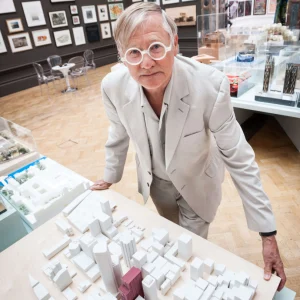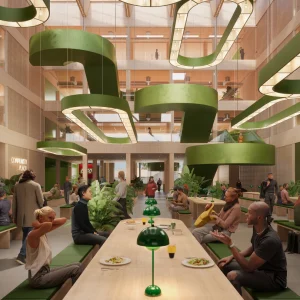The world’s first full-scale bioreactive façade at the four-storey BIQ house in Germany has been designed to provide shade and a renewable fuel source for the experimental apartment.
Built as part of International Building Exhibition (IBA) 2013 in Hamburg, the BIQ house features 200 square metre of integrated photo-bioreactors. The innovative passive-energy BIQ house generates microalgae biomass and heat as renewable energy resources. Highlighting the full potential of the technology, the system integrates additional functionalities such as dynamic shading, thermal insulation and noise abatement.
The microalgae used in the facades are cultivated in flat panel glass bioreactors measuring 2,5m x 0,7m. In total, 129 bioreactors have been installed on the south west and south east faces of BIQ house. Forming the most important part of the system, the scheme features a fully automated energy management centre where solar thermal heat and algae are harvested in a closed loop to be stored and then fermented to generate hot water.
The SolarLeaf façade is the outcome of a research by Colt International based on a bio-reactor concept developed by SSC Ltd. Funding support for the project came from the German Government’s “ZukunftBau” research initiative.
Transforming the urban environment, as well as providing architects with a new source of inspiration, the microalgae biofaçades can become a viable new source of sustainable energy production.





